
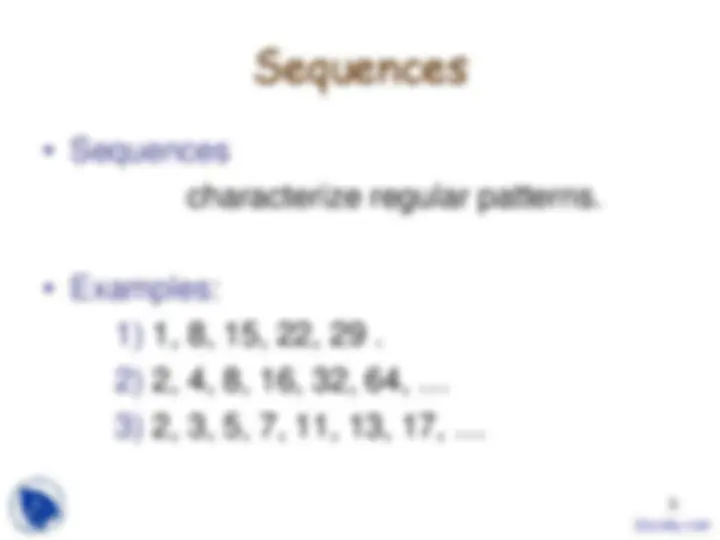
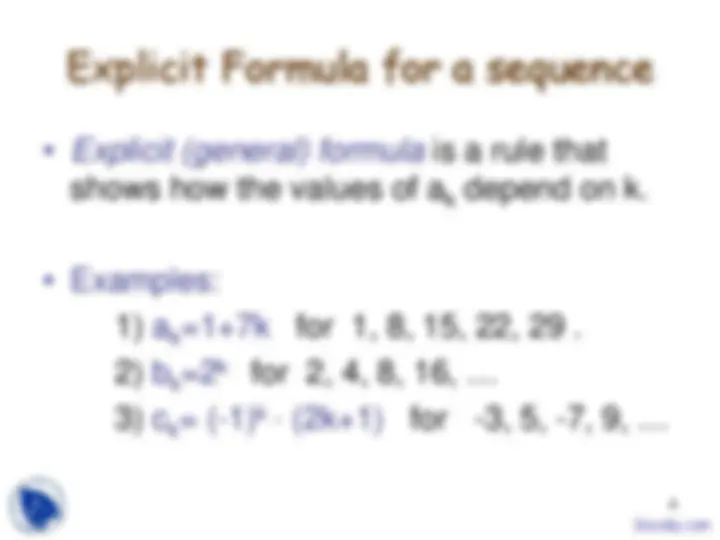
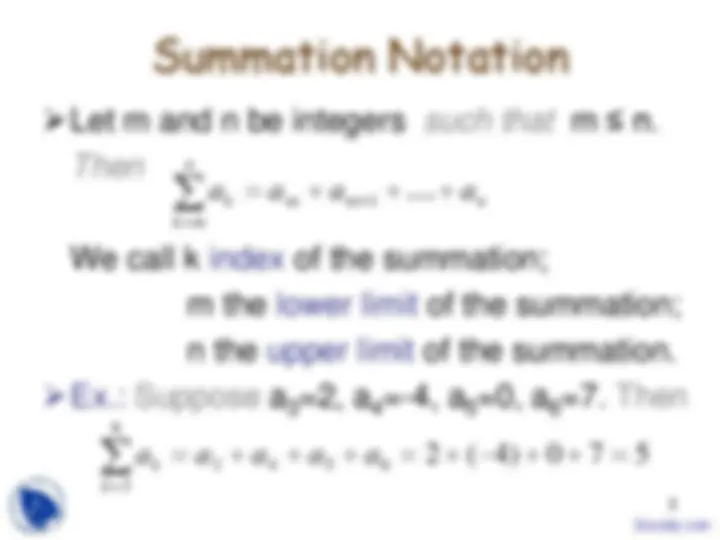
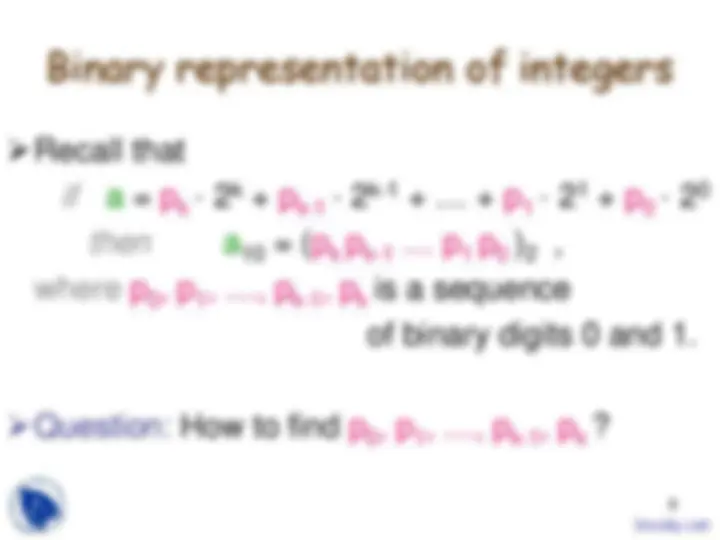
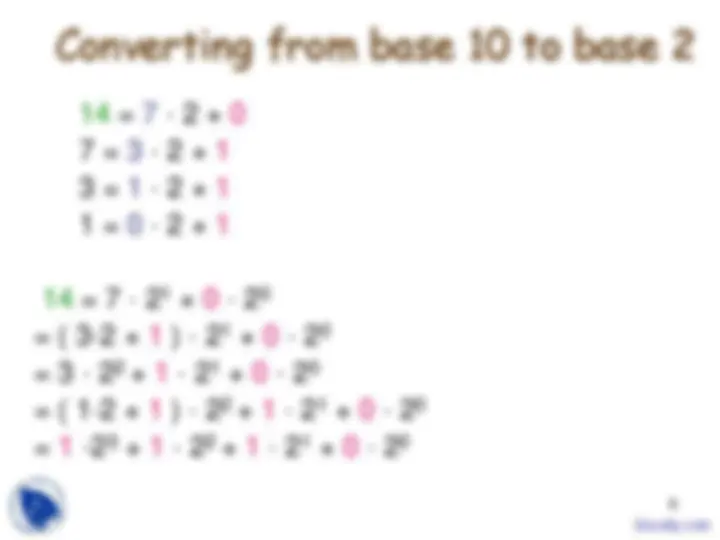
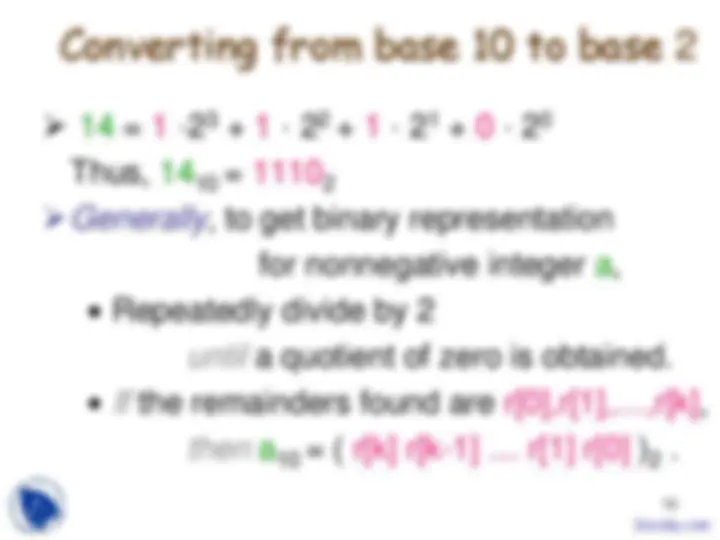


Study with the several resources on Docsity

Earn points by helping other students or get them with a premium plan


Prepare for your exams
Study with the several resources on Docsity

Earn points to download
Earn points by helping other students or get them with a premium plan
Community
Ask the community for help and clear up your study doubts
Discover the best universities in your country according to Docsity users
Free resources
Download our free guides on studying techniques, anxiety management strategies, and thesis advice from Docsity tutors
During the study of discrete mathematics, I found this course very informative and applicable.The main points in these lecture slides are:Sequences and Summations, Sequence Examples, Geometric Vs Arithmetic Sequences, Constant Factor, Fibonacci Sequence, Fibonacci References, Golden Ratio, Determining Sequence Formula, Geometric Progression
Typology: Slides
1 / 10

This page cannot be seen from the preview
Don't miss anything!







1
An important task of mathematics is to discover and
characterize regular patterns, such as those
associated with repeated processes.
processes is the sequence.
about patterns in sequences is mathematical
induction.
2
4
shows how the values of a (^) k depend on k.
5
Let m and n be integers such that m ≤ n.
Then
We call k index of the summation; m the lower limit of the summation; n the upper limit of the summation.
Ex.: Suppose a 3 =2, a 4 =-4, a 5 =0, a 6 =7. Then
m m n
n
k m
3 4 5 6 2 (^4 )^075
6
3
=
a a a a a k
k
7
Let m and n be integers such that m ≤ n.
Then
Examples : ♦
♦ For each n∈ Z +^ , is called n factorial. E.g., 4! = 1 · 2 · 3 · 4 = 24 Note: 0! = 1
m m n
n
k m
4
1 4
3 3
2 2
1 1
3
1
= ⋅ ⋅ =
k = k
k
1 2! 1
k n n
n
k
=
8
Recall that
if a = pk · 2k^ + pk-1 · 2k-1^ + … + p 1 · 2^1 + p 0 · 2^0 then a 10 = (pk pk-1 … p 1 p 0 ) 2 , where p 0 , p 1 , …, pk-1 , pk is a sequence of binary digits 0 and 1.
Question: How to find p 0 , p 1 , …, pk-1 , pk?
10
Thus, 14 10 = 1110 2
Generally , to get binary representation
for nonnegative integer a,